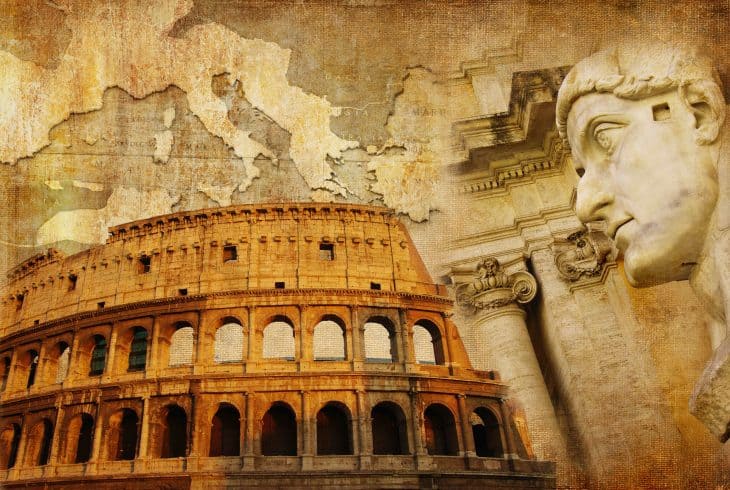
Ancient Rome fell over a thousand years ago, but its legacy lives on even today, in lists of Ancient Rome facts, even in how we conduct our day-to-day lives. The way we govern our nations, make our records, even the way we see the past, all that we inherited from Rome. Another area of influence was literature. Did you know that writers like Shakespeare, Robert Graves, Dante, and James Joyce were all influenced by the Romans?
From military structures like forts and walls, to engineering feats like baths and aqueducts, the Romans’ most visible impact that can still be seen today is their architecture. Often see buildings with columns, domes, and arches? You’ve got the Romans to thank for that. Roman architecture had a tremendous influence on modern buildings of the western civilization.
Itching to know more? Learn more about this colossus whose shadow continues to lie over the modern world, with these 100 Ancient Rome facts.
- At its height, Ancient Rome had a population of 90 million people, accounting for 20% of the world’s population at the time.
- Ancient Rome also covered an area of an estimated 5 million km² at its height.
- The value of the standard Roman silver coin, the denarius, varied over the centuries.
- At the beginning of the Roman Empire, 1 denarius equaled 10 Pounds Sterling.
- By the end of the Roman Empire, 1 denarius equaled 18 British Pound Sterling.
- Archaeologists set the founding of Rome between the 10th and 8th centuries BC.
- The Etruscans controlled Rome between the 7th and 6th centuries BC.
- The Roman Kingdom became the Roman Republic in 509 BC.
- The Romans completed their conquest of Italy around 281 BC.
- Rome and Carthage competed for control of the Western Mediterranean during the Punic Wars from 264 BC to 149 BC.
- The Roman Republic suffered from internal difficulties from the 2nd century BC onward.
- Augustus reorganized the Roman Republic into the Roman Empire in 27 BC and began the Pax Romana (Roman Peace).
- The Pax Romana ended with the Crisis of the Third Century AD.
- Constantine the Great began the Christianization of Rome in 313 BC.
- The Roman Empire ended with the Fall of Rome in 476 AD.
- Roman farms had surprisingly low productivity, only producing one ton for every hectare.
- Rome’s slave population reached its height under the republic, with slaves making 20% of the total population.
- The circulation of Roman coins reached places as far away as India.
- Romans favored trading by sea, as moving goods by sea could prove cheaper by as much as 60% than moving them on land.
- Some historians have compared the Roman economy to that of 17th century Netherlands, or even 18th century England.
Was this page helpful?
Our commitment to delivering trustworthy and engaging content is at the heart of what we do. Each fact on our site is contributed by real users like you, bringing a wealth of diverse insights and information. To ensure the highest standards of accuracy and reliability, our dedicated editors meticulously review each submission. This process guarantees that the facts we share are not only fascinating but also credible. Trust in our commitment to quality and authenticity as you explore and learn with us.
